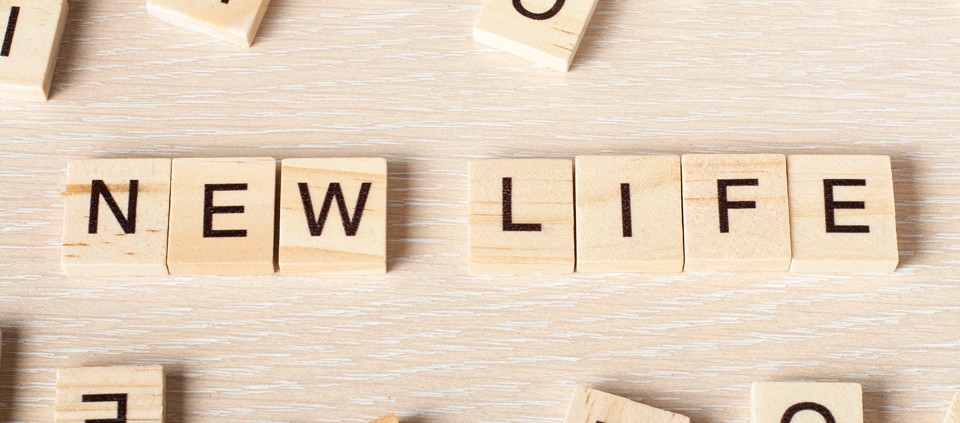ABCs to Navigate Rough Seas: A Yogi’s Toolkit for Resilience and Restoring Innate Wisdom

At the age when most children are being taught their ABCs, I was learning the ABCs of life through the actions of my biological parents. Rather than building a foundation of letter shapes and sounds like the kids around me, I was developing a different kind of foundation based on building resiliency and self-soothing tools. This ABC toolkit became my go-to during the stormy seas of abandonment, betrayal, and childhood emotional abuse and neglect.
Although no child should have to develop that kind of resiliency that early in life, I later grew to value and even appreciate the lessons my birth parents taught me. I developed the emotional regulation skills needed to handle the abusive words my mother would yell in my ear during her drunken stupors. I learned to use my breath to calm my nervous system whenever I became flooded with the familiar feeling of abandonment experienced through my biological father leaving our family when I was only months old. I learned there was a place within me in which I could connect to something greater than myself—something so much bigger than the two people who brought me into the world.
As an adult, having gone through many body-centered certifications, mindfulness trainings, and a profound personal healing process, I continue to draw from the strengths and insights developed in my childhood. I have created simple and effective ways to share these resiliency tools and help others navigate their own life experiences of trauma, stress, and pain. I realize in my own life as a mother, wife, and teacher that each moment offers us the opportunity to slow down, create space, and choose how we respond to life. Navigating the rough seas of life can be as easy as ABC, provided that we choose tools that tether us to the moment, rather than getting lost in the sea of the past or the torrent of the future.
Slow Motion Cuts Through Commotion
When we slow down, we’re able to cut through commotion and create clarity. When we slow our breathing, our thoughts begin to slow down. When our thoughts slow down, we are able to navigate the moment with mindfulness rather than reacting with fear.
Build Your Own ABC Toolkit
This quick guide can help you construct your own ABC resiliency toolkit.
A. Tether yourself to the present moment with these three As:
Awareness: Rest on what is arising within the frame of the moment by directing your attention around your breath, body, or brain. What is the texture and cadence of your breath? Are your thoughts slow or fast? Which sensations are you noticing in your body and where are they located?
Acceptance: Accept all that is arising, even if you wish it were different. Name and accept what you are noticing within your awareness. For instance, “I am aware my breath is rapid and shallow and my body is feeling tense and tight.”
Allowing: Allow for a safe experience of embodied self-realization and a shift in your neurobiology. Receive the moment with novelty and wonder as you allow for a felt sense of your experience in the moment.
B. Direct your attention around and engage with these three Bs:
Breath: The breath is the master of the mind and, in many ways, connects the brain and the body through a divine dance of alchemy. Engage with your breath as an intimate dance, inhaling and exhaling slowly and smoothly. Calming and centering the breath sends a signal to your body and your brain that you are safely connected to the moment.
Body: The body is the barometer of the moment. Invite your awareness to rest on the sensations and signals it shares with you. Learn to trust and engage with your body’s current of communication. Where can you create more space and expansion in the body? How can you release any tension you notice? Perhaps create a somatic marker to imprint your experience by bringing your hands onto your body to feel the body’s expression of the moment. Or, create a symbol or gesture with your hands to further embody your intention of the moment, imprinting it into your neurobiology.
Brain: The brain can be optimized for a heightened state of learning by choosing thoughts wisely. Engaging with novelty and wonder rather than focusing on fear primes the neural pathways of compassion, patience, and clarity. Focus on gratitude as a quick trick to redirect your brain in the moment. Simply searching for something for which you are grateful disengages the mid-brain flight/fight/freeze response, sending resources to the higher, executive-functioning part of our brain, the prefrontal cortex. The brain learns from repetition. Each time you down-regulate your emotional reaction and up-regulate your conscious response, you are building new neural grooves and pathways of embodied self-realization.
C. Notice the shifts you created in the three Cs:
Clarity in breath, brain, and body.
Connection to a safe, felt sense of the present moment.
Consciousness, igniting innate and abiding wisdom.
Living the ABCs
Living the ABCs as a blueprint to navigate times of stress and struggle invites us to slow down. As we settle into the rough seas of life, by buoying ourselves up with our own innate and abiding wisdom, we no longer get pushed, pulled, and tossed about by the temporary stormy moments of the present or past. We realize again and again that each and every breath offers us a choice. We can choose to engage from the center of the storm, allowing life to pass through us as divine alchemy rather than feeling like it is happening to us.
© Kripalu Center for Yoga & Health. All rights reserved. To request permission to reprint, please e-mail editor@kripalu.org.
Shanti and Scott Medina, CNSF, CYT, are a dynamic husband-and-wife duo from Boulder, Colorado, on a mission to uplift humanity by empowering self-realization.
Full Bio and Programs